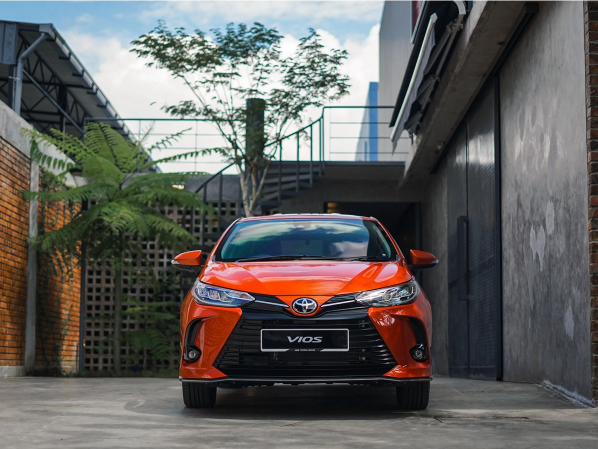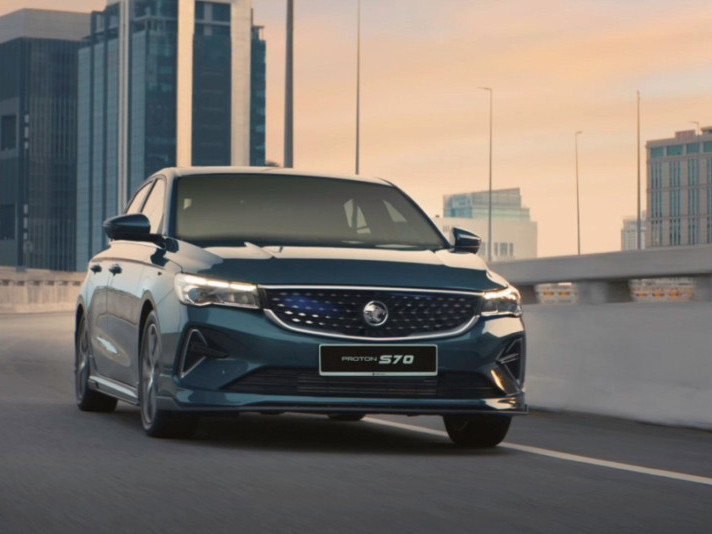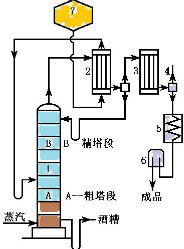Q
how many kms after fuel light comes on toyota vios
When the fuel warning light comes on in a Toyota Vios, you can typically squeeze out another 50 to 90 kilometers. The exact range depends on your driving style, road conditions, and how well you maintain the car. For example, cruising steadily on the highway will definitely stretch that fuel further than stop-and-go city traffic. It's smart to refuel as soon as that light pops on—running the tank bone dry can overheat and damage the fuel pump. Plus, driving with low fuel for long periods might suck up sediment from the bottom of the tank into the fuel system, which is never good.
Keeping up with regular maintenance helps too—swapping out the fuel filter and checking the injectors can really boost fuel efficiency. And let's not forget Malaysia's hot weather; fuel evaporates quicker here, so keeping a decent amount in the tank helps cut down on that waste. If you want a better idea of how far you can go, check the trip computer's range estimate, but remember, that's just a rough guess based on recent fuel usage—your actual mileage might vary.
Special Disclaimer: This content is published by users and does not represent the views or position of PCauto.
Related Q&A
Q
How much horsepower does a 2021 Toyota Vios have?
The 2021 Toyota Vios in Malaysia comes with a 1.5-liter four-cylinder naturally aspirated engine (code 2NR-FE) that puts out 107 horsepower and 140 Nm of torque. With Dual VVT-i technology, this engine delivers power that's perfectly suited for city commuting and everyday drives. This front-wheel-drive compact sedan pairs that engine with either a Super CVT-i continuously variable transmission or a 5-speed manual gearbox, depending on the variant, and it's known for excellent fuel efficiency.
Quick note: Horsepower is the unit that measures an engine's power output – generally, the higher the number, the better the acceleration and top speed potential. But real-world driving feel also hinges on factors like torque delivery, vehicle weight, and transmission tuning. As a popular model in Southeast Asia, the Vios prioritizes a balance of reliability and fuel economy with its powertrain setup. If you're chasing more performance, the GR lineup might be more your speed – just remember, Malaysia's road conditions and traffic laws do cap how fast you can actually go anyway.
Q
How many km per liter is the 2021 Toyota Vios?
The real-world fuel efficiency of the 2021 Toyota Vios in Malaysia can vary depending on the trim level and driving conditions. Official figures for the 1.5L Dual VVT-i engine paired with the CVT gearbox suggest a combined fuel consumption of around 15 to 17 kilometers per liter. If you're mostly doing highway cruising, you might even squeeze out over 18 km/L – thanks in part to Toyota's refined powertrain and that handy Eco driving mode.
But here's the thing about fuel economy: it's influenced by a bunch of factors. Your driving style plays a big role – jackrabbit starts and heavy acceleration will definitely guzzle more fuel. Then there's the road conditions; city driving with all that stop-start traffic usually bumps up consumption by about 20% compared to smooth highway runs. How often you blast the air conditioning matters too, and let's not forget vehicle maintenance – keeping your air filter clean and spark plugs fresh goes a long way in maintaining optimal fuel efficiency.
Malaysian owners looking for more real-world numbers can check out local platforms like MyTukar or Carlist for user-reported data. A quick tip: expect the fuel economy to settle down a bit after the initial break-in period with a new car. If you suddenly notice your Vios drinking more petrol than usual, it might be worth checking if your tire pressure is low or if the engine oil is due for a change.
Over in the same segment, the Honda City's EarthDream engine tech also delivers comparable fuel sipping abilities. Ultimately, the choice might come down to which brand's after-sales network you prefer or just personal taste.
Q
What generation is the Toyota Vios 2021?
The 2021 Toyota Vios belongs to the third-generation model (codenamed XP150). First introduced back in 2013, this generation has seen several minor updates over the years. For the Malaysian market, the 2021 iteration largely carries forward the design language from the 2019 facelift. Under the hood, you'll find the 1.5L Dual VVT-i engine paired with a CVT transmission, available in three trim levels: G, E, and J.
The third-gen Vios has been a big hit in Southeast Asia, and it's easy to see why. It's known for being fuel-efficient, reliable, and cheap to maintain – traits that make it a perfect fit for Malaysian roads and consumer preferences. What's really worth noting is how localized the Vios is for Malaysia. Some variants are even assembled locally, giving it a significant edge in terms of value for money. Safety has also been stepped up this generation, with features like VSC (Vehicle Stability Control) coming as standard across the range, and up to 7 airbags on higher-spec models – all of which boosts its appeal in the market.
For Malaysian buyers, the Vios has long been a top pick in the B-segment sedan category. It's not just Toyota's reputation for dependability that draws people in; its strong resale value and relatively low long-term running costs are big selling points too.
Q
How much is a Toyota Vios 2021?
The 2021 Toyota Vios comes with a range of prices in Malaysia depending on the trim and specs, typically starting around RM 77,200 and going up to RM 87,300. Keep in mind, though, these numbers can shift a bit based on where you are, any dealer promotions going on, or extra services you might add on.
As one of Toyota’s main players in Malaysia, the Vios sticks with what works: a 1.5-liter naturally aspirated engine paired with a CVT transmission. It’s a solid balance of fuel efficiency and everyday usability—perfect for zipping around town or longer drives. Even the base model doesn’t skimp on the essentials: you’ll get LED headlights, a 7-inch touchscreen, and a reverse camera. Step up to the higher trims, and you might score upgrades like smart keyless entry or power-adjustable seats.
What really makes the Vios a hit in Southeast Asia, though, is its reputation for durability and low maintenance costs. Plus, it holds its value pretty well on the used market, which is a big win if you’re a budget-conscious family or a first-time buyer. Speaking of used options, a 2021 Vios typically goes for between RM 60,000 and RM 75,000 these days, but that depends on how it’s been driven, mileage, and any remaining warranty.
If you’re in the market, my advice? Shop around at different dealers to compare quotes, and keep an eye on Toyota Malaysia’s official site for promos. Sometimes they’ll throw in free service packages or low-interest financing deals—definitely worth checking out to get the best bang for your buck.
Q
How many liters of coolant for Toyota Vios 2019?
For the 2019 Toyota Vios, the coolant capacity typically comes in around 5.5 to 6 liters. The exact amount might vary slightly depending on the specific trim level or cooling system design, so it's always smart to check your owner's manual or hit up a Toyota authorized service center for the precise specs. Coolant's the lifeblood that keeps your engine running at the right temp, so regularly checking the level and making sure you're using Toyota-spec coolant—usually that red or pink long-life type—is super important. Mixing different colored or types of coolants is a big no-no; it can cause chemical reactions that lead to clogs or even corrosion in the cooling system. Here in Malaysia's hot climate, coolant works extra hard, so we recommend changing it every 2 years or 40,000 kilometers, whichever comes first. If you notice the coolant changing color or the level dropping frequently, don't wait—get it checked out right away for leaks or other system issues. And while you're doing your regular maintenance, take a quick peek at the coolant reservoir too. Just make sure the level sits between the minimum and maximum marks, and your engine will thank you by staying in top working shape.
Q
How many km per liter is the Vios 2019?
The real-world fuel economy of the 2019 Toyota Vios in Malaysia can vary depending on the specific trim and driving conditions. Official figures for the 1.5-liter model come in at around 15 to 17 km per liter (that's roughly 5.9 to 6.7 liters per 100 km), but remember, those numbers are achieved under ideal testing conditions. In day-to-day driving, you'll likely see variations based on traffic, how you drive, and how much you're carrying.
As one of Malaysia's top-selling compact sedans, the Vios owes its impressive fuel sipping to Toyota's Dual VVT-i engine tech and lightweight body design—making it a solid pick for both daily commutes and longer highway stretches. If you want to squeeze even more efficiency out of it, stick to regular maintenance, use the right engine oil, avoid jackrabbit starts and hard braking, and keep those tires properly inflated to the recommended pressure. Malaysia's hot weather can also play a role, so how often you blast the air-con is another factor to keep in mind.
All said and done, the Vios has long stood out in its class for being reliable and fuel-efficient, which is why it remains a top choice for families and young drivers alike.
Q
Is Vios 2019 CVT?
Yep, the 2019 Toyota Vios did come with a CVT (Continuously Variable Transmission) in the Malaysian market, and let me tell you, this gearbox is all about that smooth, seamless shifting and solid fuel economy—total city slicker material. The magic of CVT tech lies in those continuously variable gear ratios, right? It keeps the engine humming along in its sweet spot, which really helps squeeze out those extra kilometers per liter. That’s a big part of why so many Malaysians have gravitated towards the Vios over the years.
Beyond the tranny, the 2019 Vios also packs a 1.5-liter Dual VVT-i engine, striking a nice balance between peppy performance and fuel efficiency—perfect for daily commutes and family runs. In Malaysia, the Vios has built a strong rep for being reliable as a workhorse, easy on the wallet when it comes to maintenance, and backed by Toyota’s widespread service network, which is a huge plus.
If you’re eyeing a used one, do yourself a favor and dig into that transmission service history. Make sure the CVT fluid was changed regularly; that’s key to keeping it running smoothly for the long haul. Also, when you’re behind the wheel, try to avoid those sudden jackrabbit starts or slamming on the brakes too often. Easy does it will help extend the CVT’s lifespan. All in all, the 2019 Vios with CVT is a solid, practical choice that fits right in with Malaysian roads and what local drivers are after.
Q
What cylinder is the 2019 Vios?
The 2019 Toyota Vios in the Malaysian market is powered by a 1.5-liter four-cylinder naturally aspirated engine, coded 2NR-FE. This engine features Dual VVT-i (Dual Variable Valve Timing-intelligent) technology, churning out a maximum 107 horsepower and a peak torque of 140 Nm. It's paired with either a CVT automatic or a 5-speed manual gearbox, delivering a smooth driving experience and solid fuel efficiency. Four-cylinder engines are pretty much the go-to in small cars for their inherent balance and stability—perfect for daily commutes and city driving—plus, they’re generally easier on the wallet when it comes to maintenance. As one of Toyota’s top sellers in Malaysia, the Vios’ engine is known for being tried, tested, and reliable, well-suited to local road conditions and climate. With regular servicing, owners can expect it to hold up well and keep performing strong for years. For those eager to dive deeper into engine tech, it’s worth checking out how cylinder configurations (like inline, V-shaped, etc.) affect a car’s performance and how it drives—each layout has its own pros and cons, tailored to different vehicle types and needs.
Q
What is the fuel consumption of Toyota Vios 2019 km L?
The fuel efficiency of the 2019 Toyota Vios can vary depending on the trim and driving conditions. Official figures suggest that the 1.5-liter model returns an average of around 15 to 17 kilometers per liter under combined driving conditions. Of course, your actual mileage will depend on things like your driving style, the roads you take, and how well you maintain the car. Typically, the manual transmission versions might eke out a tiny bit better fuel economy than the automatics. You'll notice it drinking a bit more when stuck in city traffic, but it should be more frugal out on the highway during steady cruising.
For Malaysian drivers, the Vios stands out as a solidly fuel-efficient compact sedan, making it a great pick for both daily commutes and longer road trips. To keep it running at its most efficient, I'd recommend sticking to regular maintenance – think replacing the air filter when needed and using the right viscosity engine oil.
Other factors can affect how far you go on a tank too, like tire pressure, how much you use the air conditioning, and even how much weight you're carrying. Simple driving habits like accelerating smoothly and decelerating early can also help stretch those liters a bit further. If you're trying to get a really accurate picture of your running costs, it's worth keeping an eye on local fuel price fluctuations and tracking your own real-world driving data.
Q
How much horsepower does a 2019 Toyota Vios have?
The 2019 Toyota Vios in Malaysia comes packing a 1.5-liter 2NR-FE four-cylinder naturally aspirated engine. Now, the max horsepower output varies a bit depending on the transmission you go for. The version with the 7-speed CVT gearbox puts out 107 horsepower, while the one paired with the 4-speed automatic transmission delivers 104 horsepower. This car has built up a solid fan base in Malaysia thanks to its fuel efficiency and reliability, making it a great fit for city commuting and family use.
Horsepower, of course, is a key measure of engine performance, directly impacting a car's acceleration and top speed. But for everyday driving, the Vios has more than enough grunt to handle most road situations. On top of that, Toyota's got a well-established after-sales service network in Malaysia, which means owners get convenient maintenance and repair support. That's definitely one of the reasons so many Malaysian buyers opt for the Vios.
Latest Q&A
Q
Is there a recall on 2019 Kia Optima engines?
Regarding the engine recall issue for the 2019 Kia Optima, there's currently no official recall announcement specifically targeting the Malaysian market. However, looking at international records, certain overseas markets did see recalls for the 2019 Optima due to potential engine faults – think issues like bearing wear in Theta II GDI engines, which could potentially lead to stalling or even fire risks. If you're a Malaysian Optima owner, I’d strongly suggest heading to Kia Malaysia’s official website, finding their recall check page, and plugging in your Vehicle Identification Number (VIN) to see if your ride is affected. Or, just swing by your nearest authorized service center for a free inspection – better safe than sorry.
It’s worth noting that Hyundai Motor Group implemented an extended warranty policy worldwide for Theta II engine concerns. For some models, the warranty coverage for engine-related components can be extended up to 15 years or 200,000 kilometers, whichever comes first. That’s a solid demonstration of the brand taking responsibility for its customers.
For Malaysian owners, a proactive step during regular maintenance is to specifically request a check on the engine's condition – keeping an eye on oil loss and any unusual noises is key for preventing potential problems. Also, it’s a good idea to stay updated on any service campaigns announced by local Kia dealers. Sometimes, these campaigns might offer free inspections or repairs for issues that aren’t officially classified as recalls but are still worth addressing.
If your vehicle starts showing symptoms like warning lights flashing, a noticeable drop in power, or excessive oil consumption, don’t delay – contact after-sales service immediately. Catching and addressing issues early can significantly reduce the cost of repairs down the line.
Q
How long will a 2019 Kia last?
The lifespan of a 2019 Kia largely depends on how well you maintain it, your driving habits, and Malaysia's road conditions. If you stick to the manufacturer's recommended maintenance schedule—like changing the oil every 6 months or 10,000 km and checking key components—drive sensibly, and avoid prolonged rough roads, these models typically clock 200,000 to 300,000 km or last over 10 years. Malaysia's hot and humid climate takes a toll on rubber parts (belts, bushings) and batteries, so it's smart to shorten inspection intervals for these and regularly clean the AC system to prevent mold growth. Hyundai-Kia's Theta II and Nu engines are pretty solid tech-wise, and paired with the 6AT transmission, the powertrain reliability holds up well against competitors—just don't skip that transmission fluid change.
Notably, Malaysia's COE system pushes some owners to prioritize long-term care, so I'd recommend using SP/GF-6A spec oil at authorized dealers or certified workshops. On the used market, 2019 Kias with full service records still hold decent resale value. If you're planning to keep it for the long haul, extended warranty might be worth considering. Durability varies a bit between models like the Cerato and Sportage due to their different purposes—SUVs like the Sportage might need more frequent suspension checks.
Q
Are Kia Optimas cheap to fix?
When it comes to the maintenance costs of the Kia Optima in Malaysia, this sedan falls right in the middle of the pack for midsize cars. Parts and labor are definitely easier on the wallet compared to luxury brands, though you might pay a bit more than some heavily localized Japanese models. The Optima's 2.0L and 2.4L naturally aspirated engines are pretty tried-and-true tech – basic services like an oil change with filters will set you back around RM300 to RM500, which lines up with what you'd pay for other cars in its class. Just a heads-up though: if you're looking at the 1.6T turbocharged version, expect those service bills to creep up a notch.
Kia's authorized service center network covers most major cities in Malaysia, so getting your hands on genuine parts is usually straightforward. That said, some non-critical components might need to be ordered in, so it's smart to stick to regular maintenance schedules to avoid bigger repair headaches down the line. If you're in the market for a used Optima, prioritize ones with a complete service history – and maybe look into third-party warranty plans to help cover any unexpected major repairs. All in all, the Optima is more budget-friendly to maintain than its European rivals, but you'll still need to set aside more than you would for a basic econobox. Choosing official or certified repair channels can really help keep those costs in check.
Q
What kind of engine is in the 2019 Kia Optima?
The 2019 Kia Optima hits Malaysian roads with two petrol engine choices: a 2.0-litre naturally aspirated Theta II MPI and a 1.6-litre turbocharged Gamma T-GDI. The 2.0L puts out 152 hp and 192 Nm of torque, perfect for folks who prioritize a smooth, laid-back drive. On the flip side, the 1.6T cranks things up with a meatier 180 hp and 265 Nm, catering to drivers who crave that extra zip when they hit the throttle. Both engines are mated to a 6-speed automatic gearbox, striking a decent balance between fuel efficiency and everyday comfort.
What’s neat about the Optima’s engines is the tech packed in—think direct injection and turbocharging (for the 1.6). These aren’t just buzzwords; they actually help boost power while keeping fuel consumption in check. For Malaysian drivers, both engines should handle our local climate and road conditions like a champ. Kia’s engines have also proven their durability over time, and maintenance costs won’t break the bank. If you’re really hungry for more power, there’s the Optima GT with a 2.0-litre turbo, but keep in mind that trim’s a bit of a rare find in Malaysia.
Q
What is a good year for Kia Optima?
If you're in the Malaysian market for a Kia Optima, the 2016 to 2018 model years come highly recommended. These iterations strike a solid balance between reliability, features, and driving dynamics. The 2016 facelift, in particular, brought a more stylish exterior, a nicer interior feel, and stepped-up safety kit like blind-spot detection and lane-keeping assist. Then, the 2017 and 2018 models refined the powertrain further, delivering an even smoother ride.
On top of that, used Optimas in Malaysia are pretty reasonably priced, and maintenance costs won't break the bank either. They're a solid pick if you're on a budget but still want the comfort of a midsize sedan. A quick heads-up though: when shopping used, always prioritize ones with complete service records. It's also smart to get a proper inspection through official channels to make sure the car's in good shape. Malaysia's hot and humid weather can be tough on a car's electronics and rubber parts, so keeping an eye on the cooling system and seals will definitely help keep it running longer.
View MoreRelated News

Toyota Vios Interior Design Revealed: A Balance of Functionality and Aesthetics
LienJul 18, 2025

Proton S70 vs Honda City: The New Segment Leader?
LienJun 5, 2025

Toyota Vios : An In-Depth Buying Guide
LienMar 25, 2025

Toyota Vios: Selling price starts from RM 89,600, is it a Mini Camry?
LienMay 28, 2024

Toyota Land Cruiser FJ did not disappoint, the most anticipated civilian off-road vehicle is back.
Kevin WongOct 21, 2025
View More


















Pros
Cons